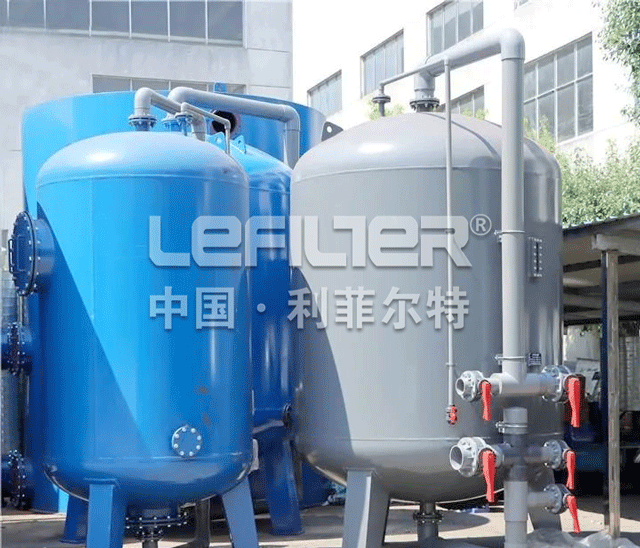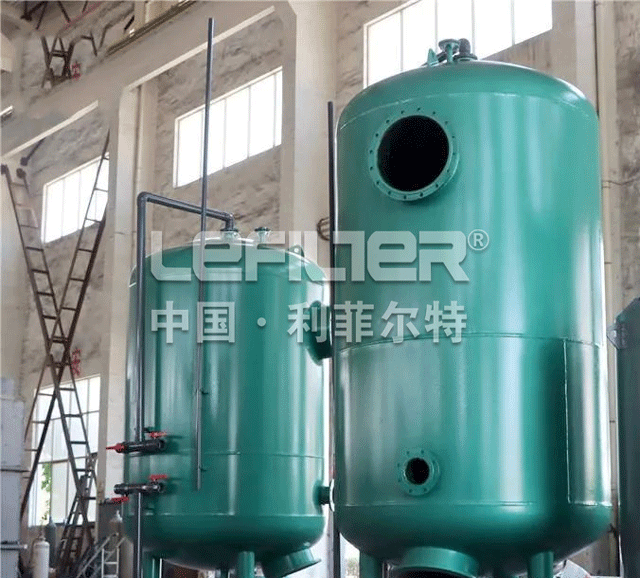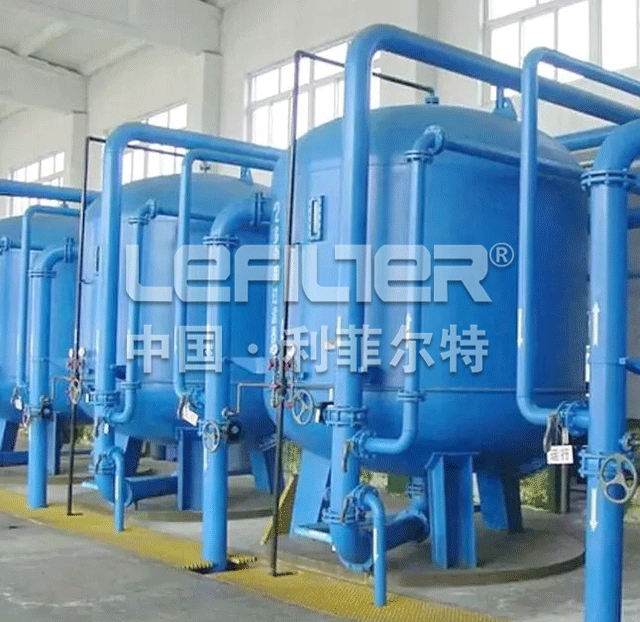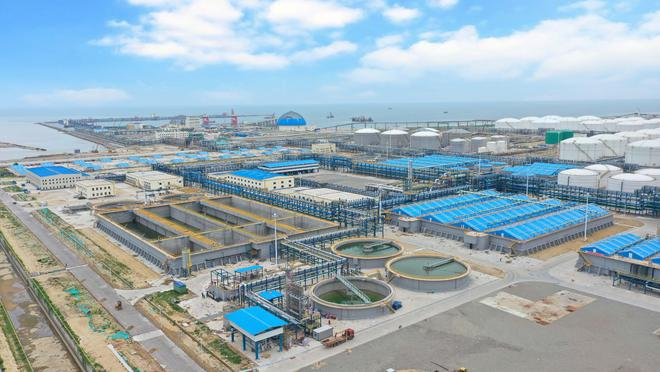The multi-media filters in circulating water treatment
DATE:2024-04-10 Number of views: 1 Source:2
Multi-media filters use two or more media as the filter layer (filter bed). In industrial circulating water treatment systems, they are used to remove impurities, adsorbed oil, suspended or colloidal impurities in sewage, and can effectively remove tiny particles. and bacteria, etc. Commonly used filter materials include quartz sand, anthracite, manganese sand, etc.
The multi-media filter is mainly composed of a filter body, supporting pipelines and valves, and mainly includes the following components: tank, water distribution component, support component, backwash air pipe, filter material, exhaust valve (external), etc.

Filtration principle of multi-media filter
When the raw water passes through the filter material from top to bottom, the suspended solids in the water are intercepted by the surface of the filter layer due to adsorption and mechanical flow resistance; when the water flows into the middle of the filter layer, because the sand particles in the filter material layer are arranged more closely, the particles in the water are There are more opportunities to collide with sand particles, causing flocs, suspended solids and the surface of sand particles in the water to adhere to each other, and impurities in the water are trapped in the filter material layer, thereby obtaining clear water quality.
Backwashing principle of multi-media filter
The water flow passes through the filter material layer in the opposite direction (bottom up), causing the filter layer to expand and suspend. The filter material layer is cleaned with the help of the shear force of the water flow and the collision friction of the particles, so that the dirt in the filter layer is detached and transported with the backwash water. discharge. Backwashing is controlled by the inlet and outlet pressure difference parameter setting, which is generally 2 to 3 days, depending on the turbidity of the raw water.

Filter material selection and filter layer design
The main factors to consider when selecting filter media are:
(1) It must have sufficient mechanical strength to avoid rapid wear and tear during backwashing;
(2) The chemical stability should be good;
(3) Does not contain harmful or toxic substances that are harmful to human health;
(4) When selecting filter materials, try to use filter materials with strong adsorption capacity, large pollution interception capacity, high water production, and good effluent quality.
Among the filter materials, pebbles mainly play a supporting role. During the filtration process, they have high strength, stable spacing, and large pores, so that the water flow can pass smoothly during the forward washing process. (The same goes for the backwashing process)
In the conventional configuration, the pebbles are divided into four specifications, and the paving method is from bottom to top, first larger and then smaller.
The relationship between the particle size of the filter material and the filling height: the ratio of the height of the filter bed to the average particle size of the filter material is 800 to 1000 (design specifications).
The particle size of the filter material is related to the filtration accuracy: the particle size requires that the particle size of the lower filter material is smaller than the particle size of the upper filter material to ensure that the lower filter material can be fully utilized.

Application areas
It can be widely used in electronic power, petrochemical industry, metallurgical electroplating, papermaking and textile, pharmaceutical dialysis, swimming pool water treatment, etc. For example, in industry: it can be used to reduce turbidity and color of surface water and groundwater, and can effectively remove suspended solids, organic matter, colloids, sediment, etc. in the water.
It can also be widely used in food and beverages and drinking water, such as drinking water: it is mainly used for pre-treatment of water treatment turbidity removal, softened water, electrodialysis, reverse osmosis, ion exchanger, ultrafiltration and other systems.
(The specific application can be based on the purpose of water production. For drinking water, the use of anthracite, resin and other filter materials is generally prohibited.)



